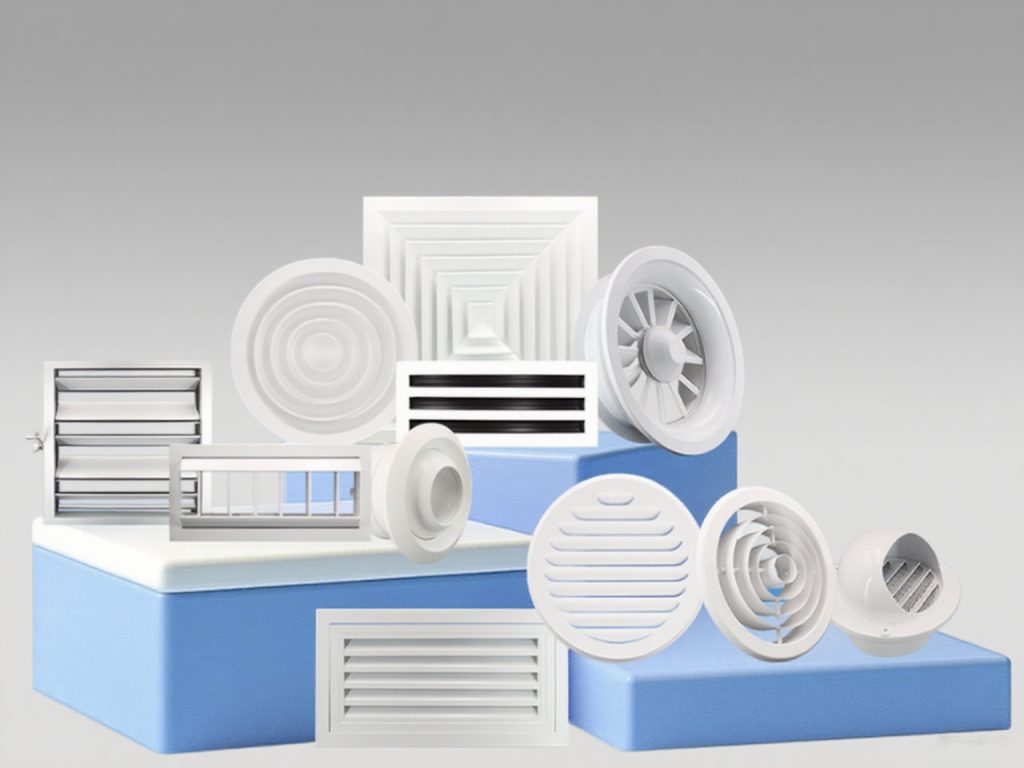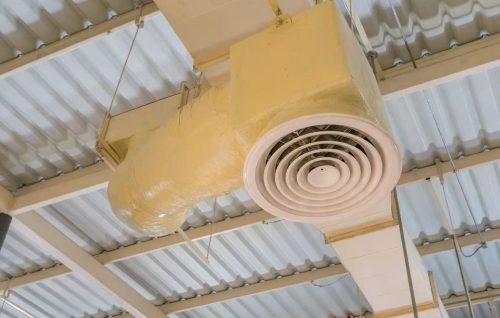-
What is an HVAC Diffuser? 2025-08-28
With excellent product quality and flexible customization capabilities, Fenglixing ventilators have been exported to more than 50 countrie
Read More -
Why do we choose aluminum alloy for product manufacturing? 2025-08-27
With excellent product quality and flexible customization capabilities, Fenglixing ventilators have been exported to more than 50 countrie
Read More -
How Can Ventilation Systems Help Save Energy and Reduce Emissions in the Green Building Trend? 2025-08-26
With excellent product quality and flexible customization capabilities, Fenglixing ventilators have been exported to more than 50 countrie
Read More
What is an HVAC Diffuser?

An HVAC diffuser is a device that uses specially designed, shaped blades to direct air from the equipment into the room at various angles and directions.
Unlike air blown directly from ducts through vents or grilles (which typically push air only in one direction, upward or downward), its core function is to disperse air evenly around the room, achieving balanced air distribution within the room. Furthermore, when properly constructed, diffusers can effectively reduce equipment noise during operation, making them a critical component for efficient air distribution in HVAC
Uses of diffusers:
- Transport air for cooling, heating and ventilation, and provide basic temperature and humidity regulation and air renewal indoors;
- Accurately and evenly direct airflow in the designated direction to avoid temperature imbalance in local areas;
- Promote the full mixing of the original indoor air and the newly introduced conditioned air, and improve the overall environmental comfort;
- Utilize the Coanda effect (the phenomenon of airflow adhering to a solid surface) to allow airflow to diffuse along surfaces such as ceilings or walls, thereby expanding coverage.
- A low-speed air circulation system is formed in the living and activity areas of the room, ensuring air flow without causing discomfort due to excessive wind speed;
- While completing all the above functions, it reduces operating noise as much as possible and reduces interference with the indoor environment.
In addition, diffusers are the core component of the room air distribution subsystem in all-air systems and air-water hybrid HVAC systems. They are widely used in air conditioning and ventilation scenarios in various buildings, but they need to be cleaned regularly to maintain their efficient operation.
Different diffuser designs:

HVAC diffuser design focuses on two key aspects: efficient air distribution and adaptability to diverse scenarios. These diffusers offer a wide variety of shapes, structures, and functions. These can be specifically considered from the following perspectives:
1. Basic styling design
Most diffusers are geometric in shape, with square and circular shapes being common. The angle and direction of their vents are adapted to the overall curved shape, ensuring air is dispersed along a predetermined path. This simple design blends easily with various decor styles while meeting the basic air distribution needs of most rooms.
2. Special function design
To meet complex air supply requirements, diffusers also have some unique designs:
- Eyeball diffuser:Consists of a rotatable sphere and a fixed bracket. By rotating the bracket, the spherical vent can be flexibly adjusted in any direction (360°), making it suitable for scenarios requiring precise directional air supply (such as localized air supply, avoiding furniture obstructions, etc.).
- Multidirectional diffusion structure:Some diffusers can disperse air in multiple directions simultaneously (e.g., two-way, four-way) through differentiated blade angle design. They are particularly suitable for large spaces (such as living rooms and offices) that require uniform air supply throughout the room.
3. Combination with airflow control
The design of the diffuser is closely related to the airflow pattern:
- The inclination angle and arrangement density of the blades are precisely calculated to guide the airflow to form a specific diffusion range (such as flowing close to the ceiling, sinking to the ground, etc.) to avoid local airflow that is too strong or too weak.
- Some diffusers have built-in adjustable blades that can control air volume and direction by changing the blade angle, further adapting to the needs of different seasons (such as warm air blowing downward in winter and cool air blowing horizontally in summer) or usage scenarios.
4. Adaptation to the installation environment
- In terms of installation location: Most diffusers are designed to be installed on the ceiling, which not only saves space but also utilizes the natural flow characteristics of air to expand the coverage area; some special scenarios (such as floor air supply systems) will adopt an underground design, which is flatter in shape to fit the ground.
- Decorative integration: In addition to functionality, the diffuser's exterior design also focuses on coordination with interior decoration. Surface treatments (such as white glaze and metallic primary colors) and edge shapes (such as rounded corners and linear minimalist styles) can be adapted to a variety of styles, including modern and retro, to avoid a sense of abruptness.
In short, the design of the diffuser is a combination of function and scene - it ensures uniform and low-noise air diffusion through structural details, and meets the installation and decoration requirements of different spaces through diverse shapes.



